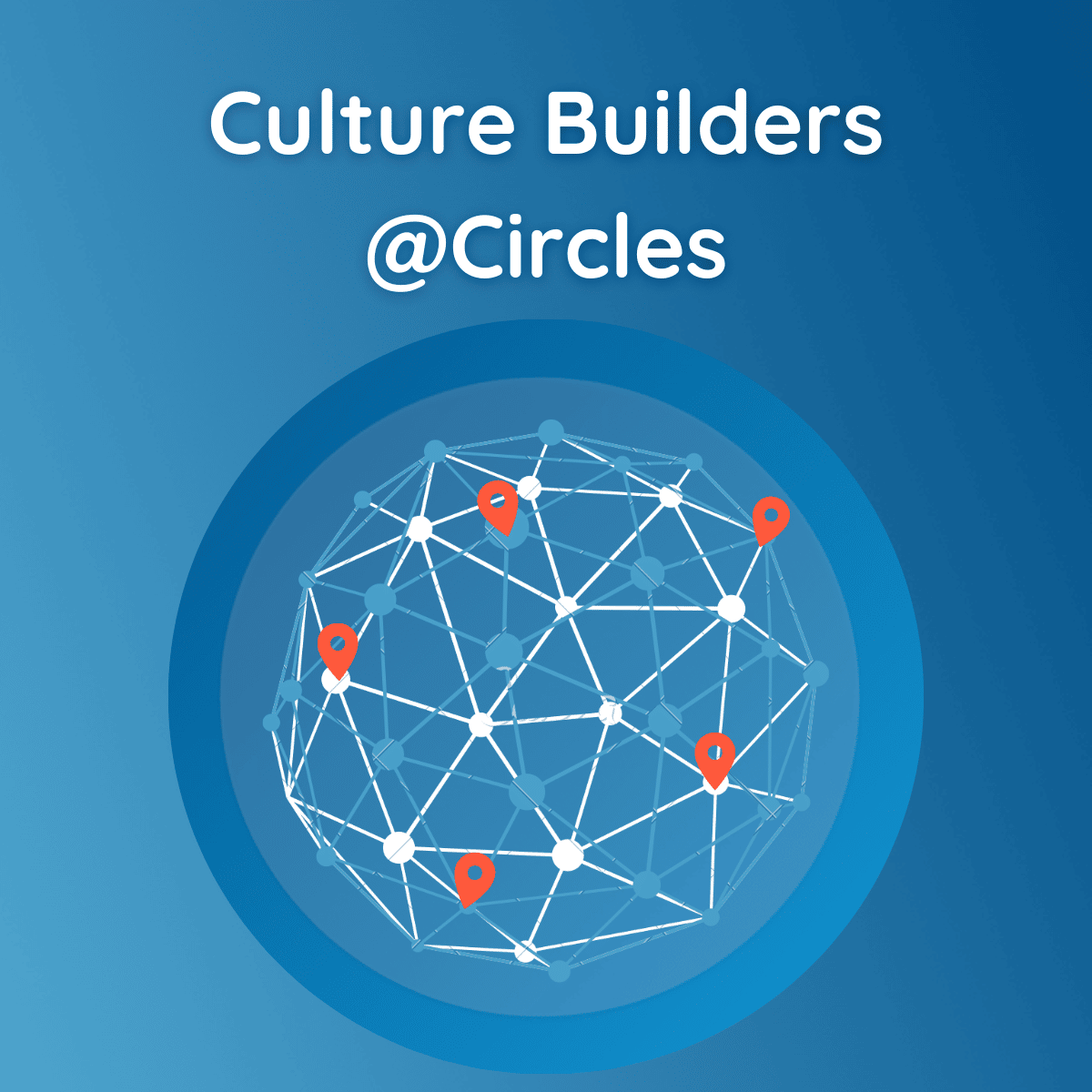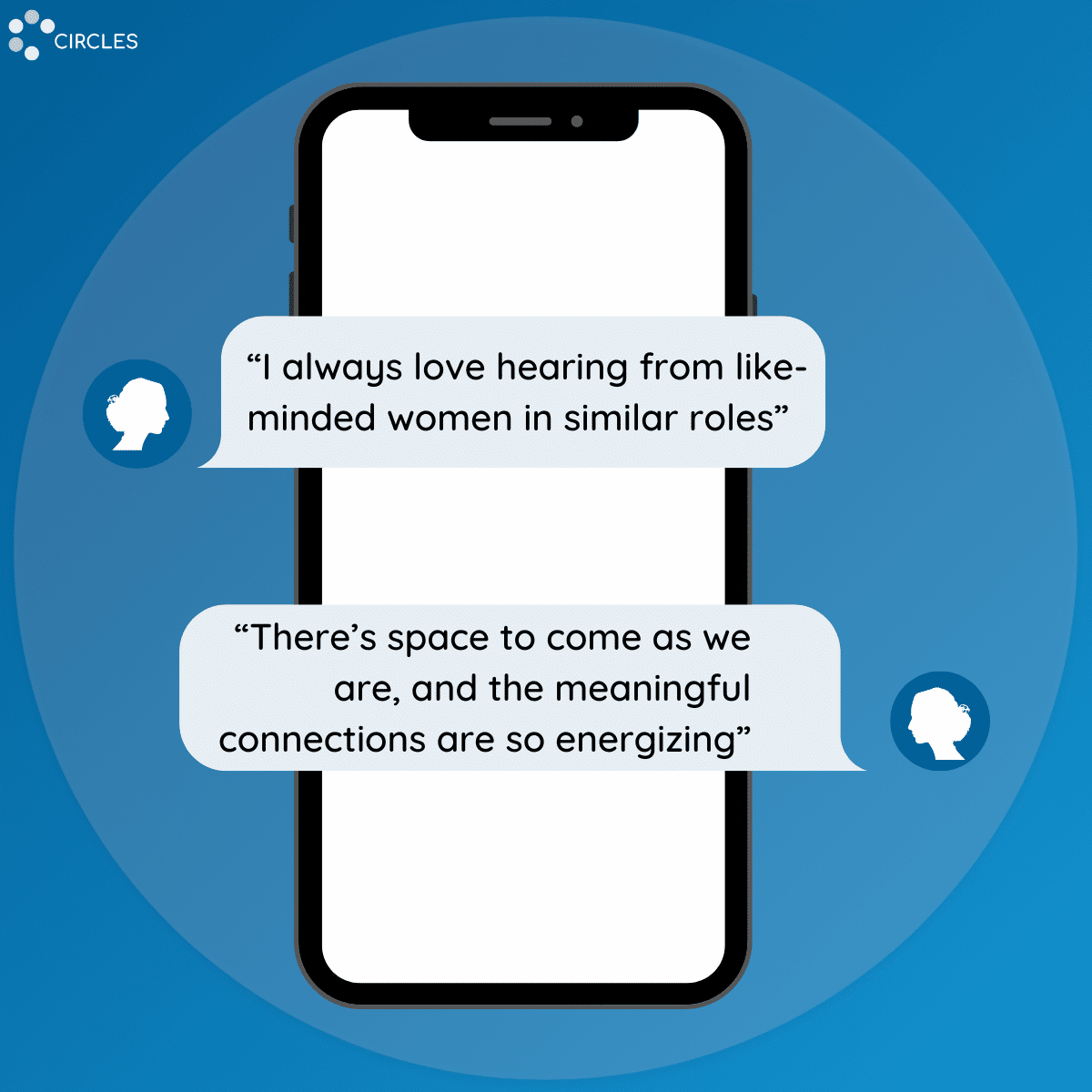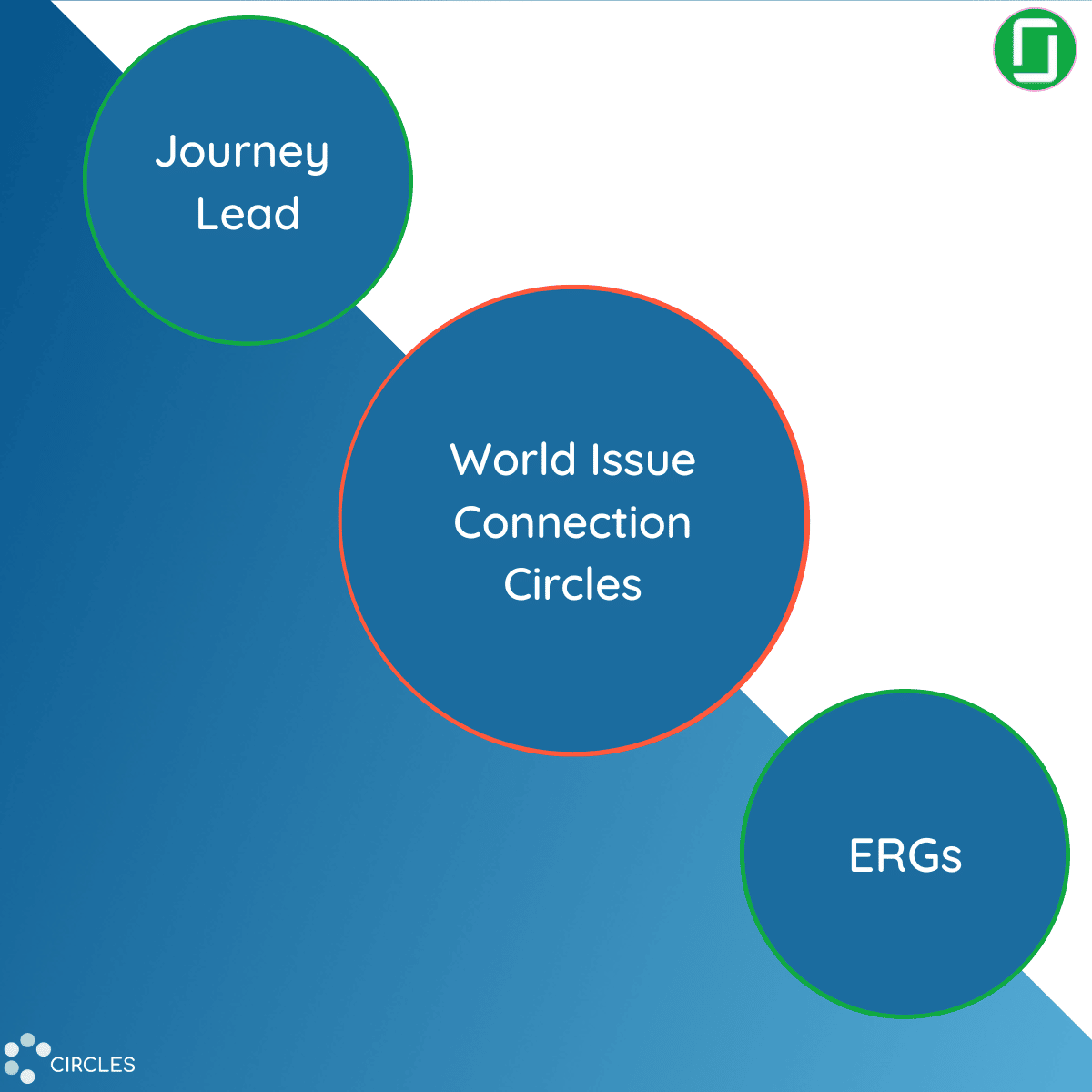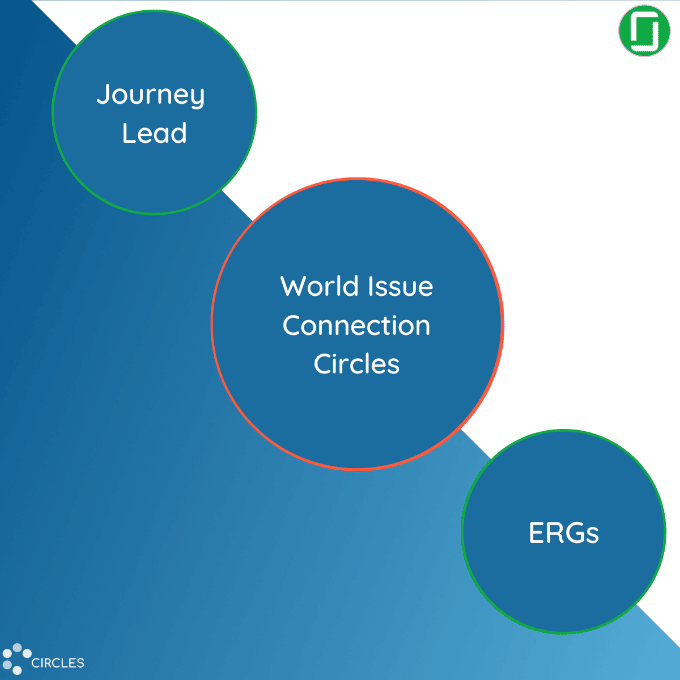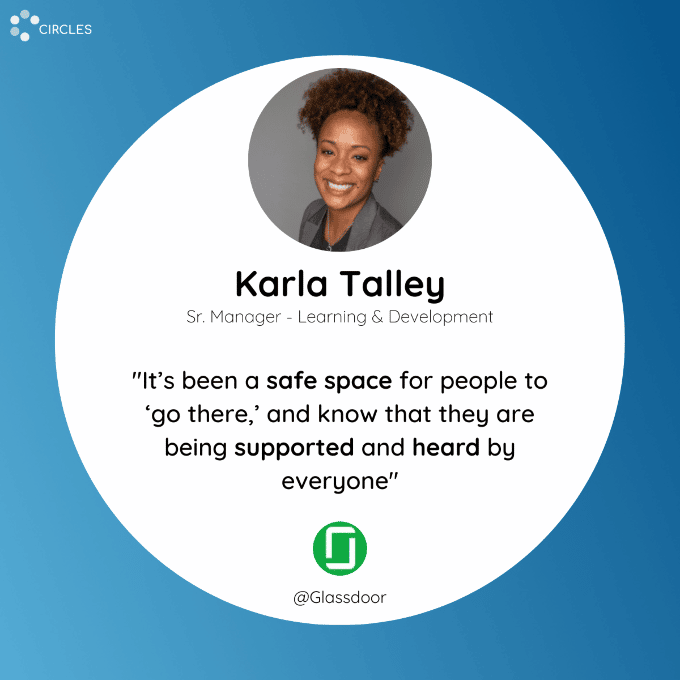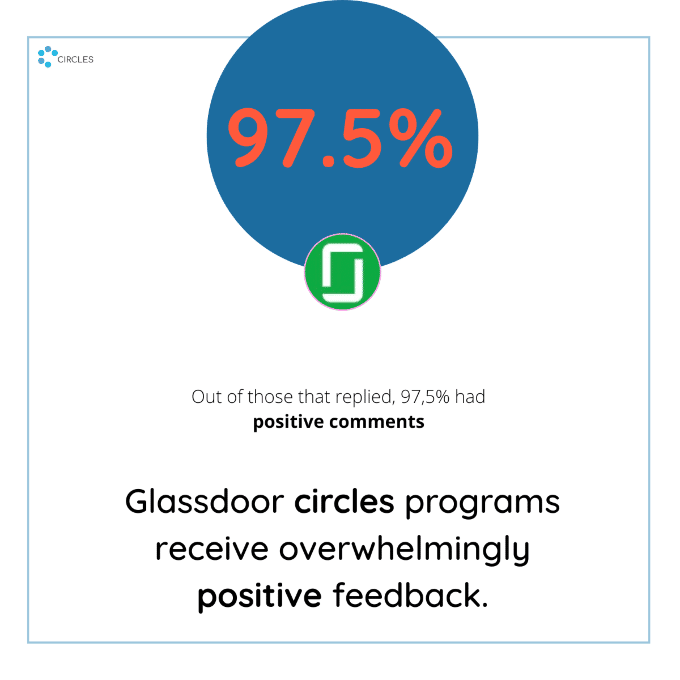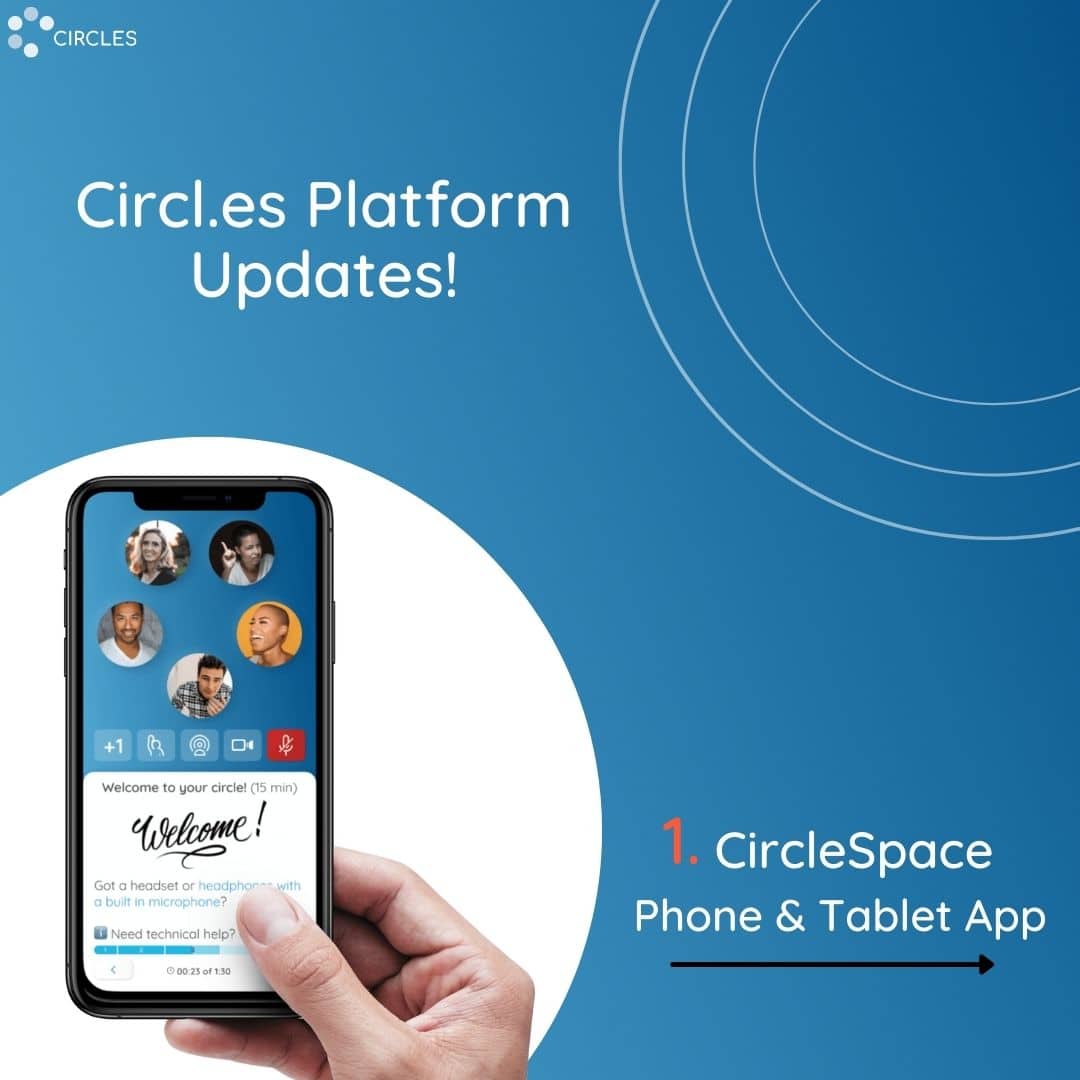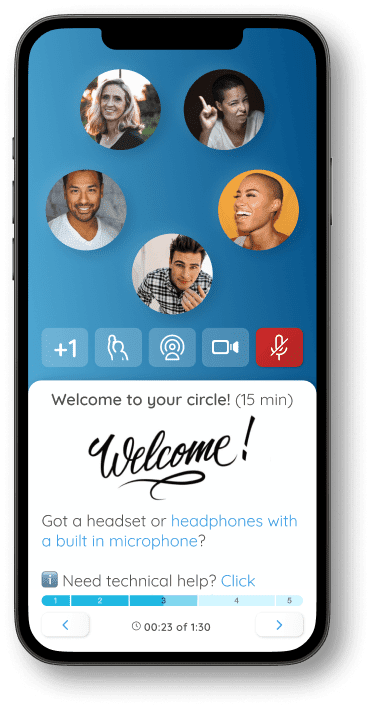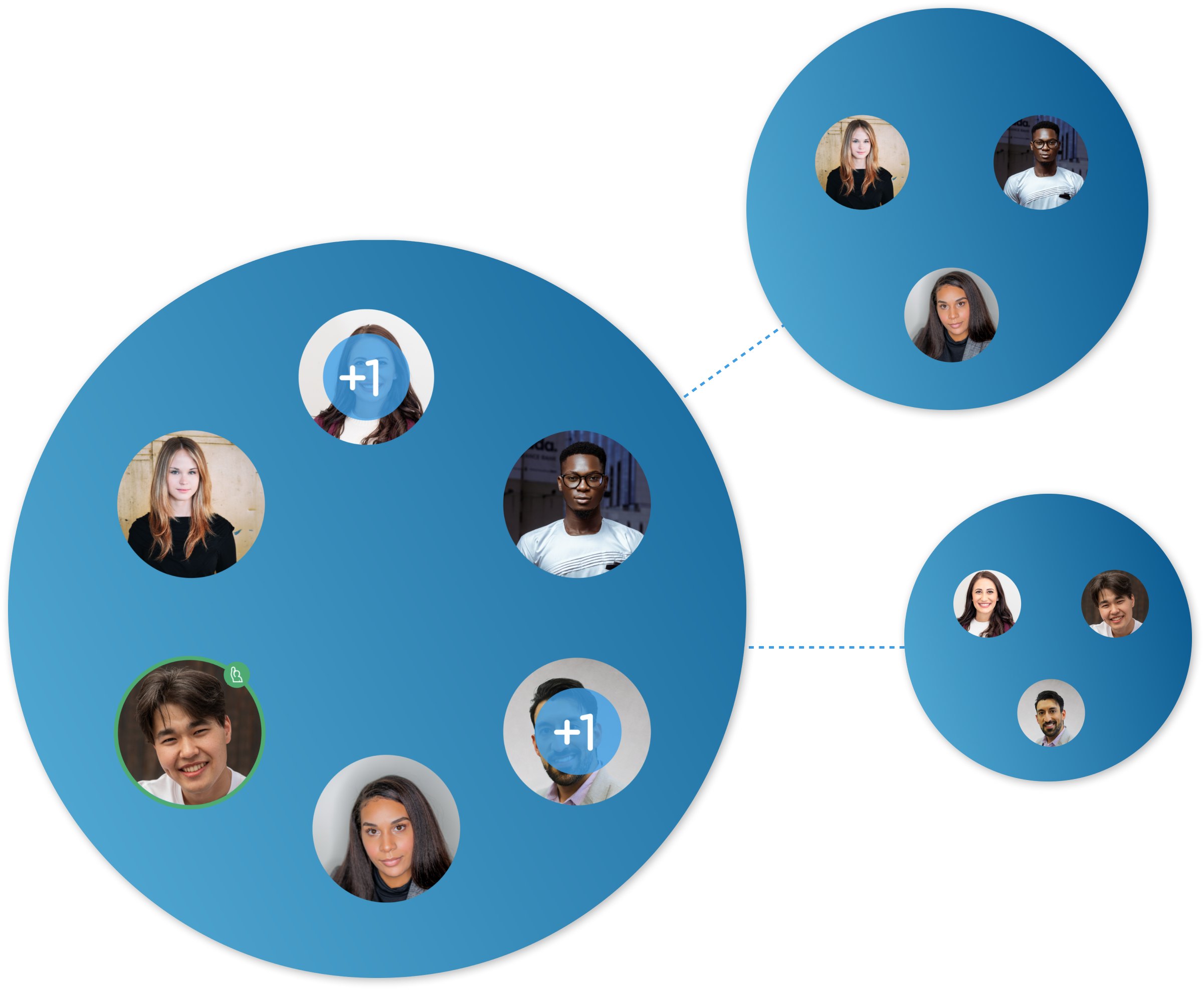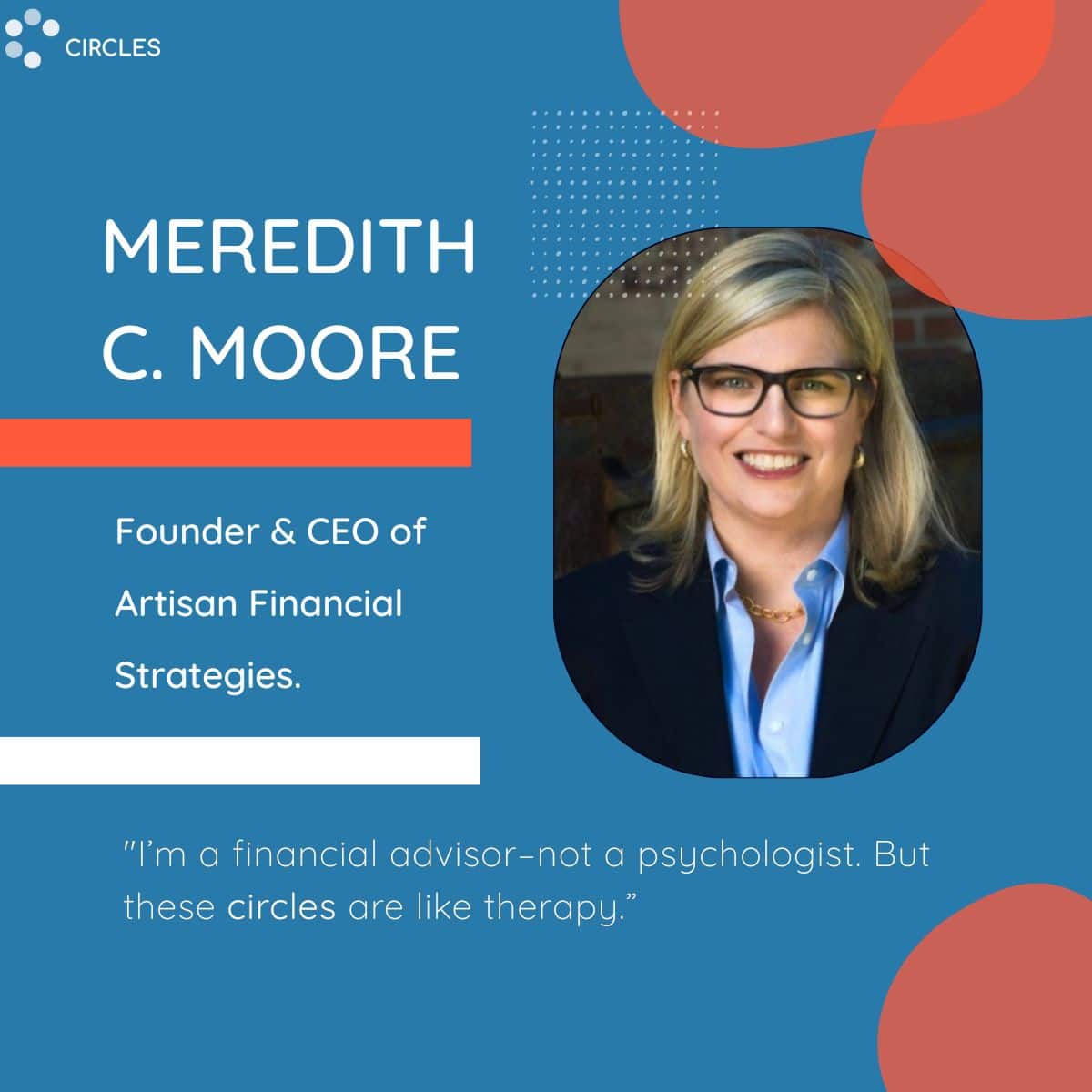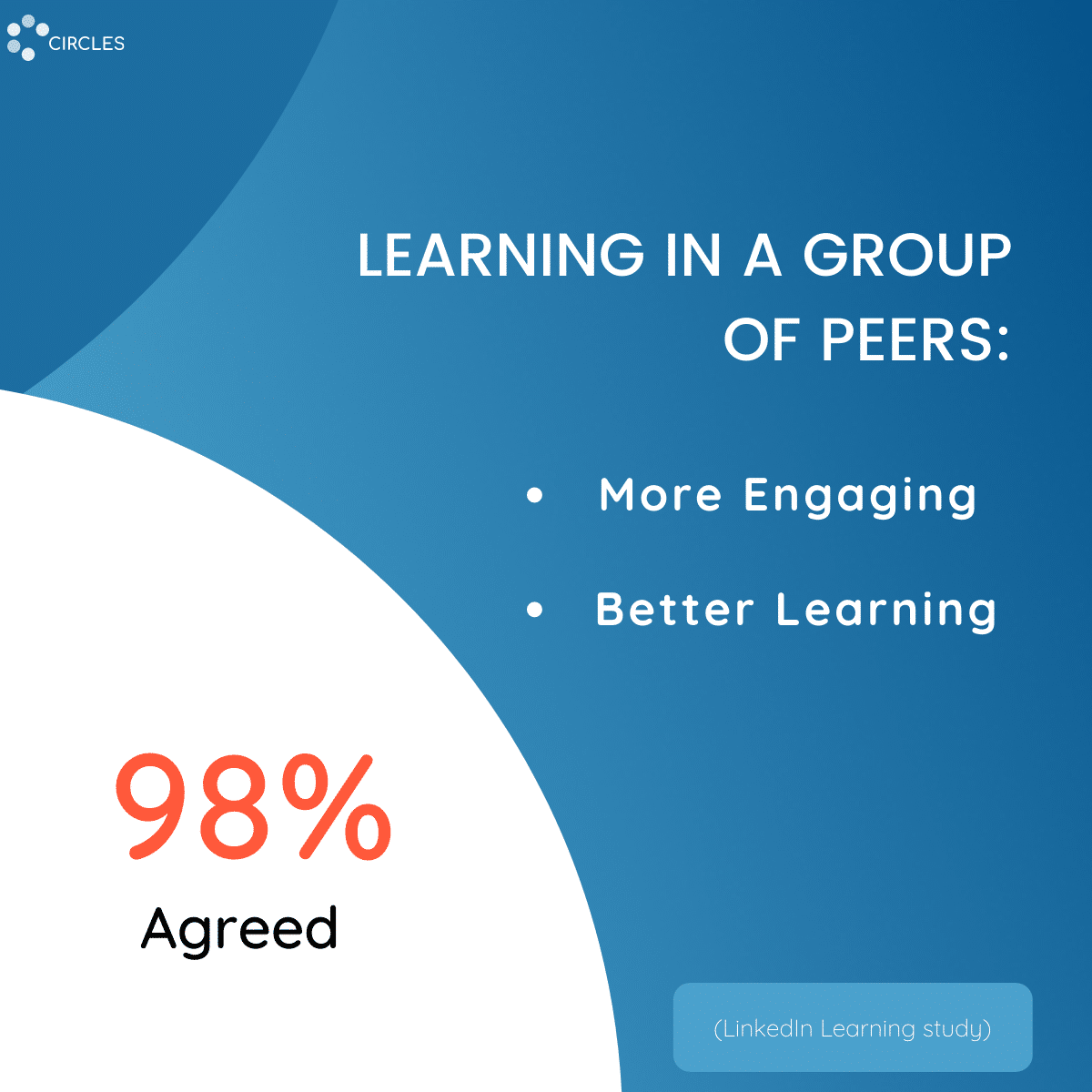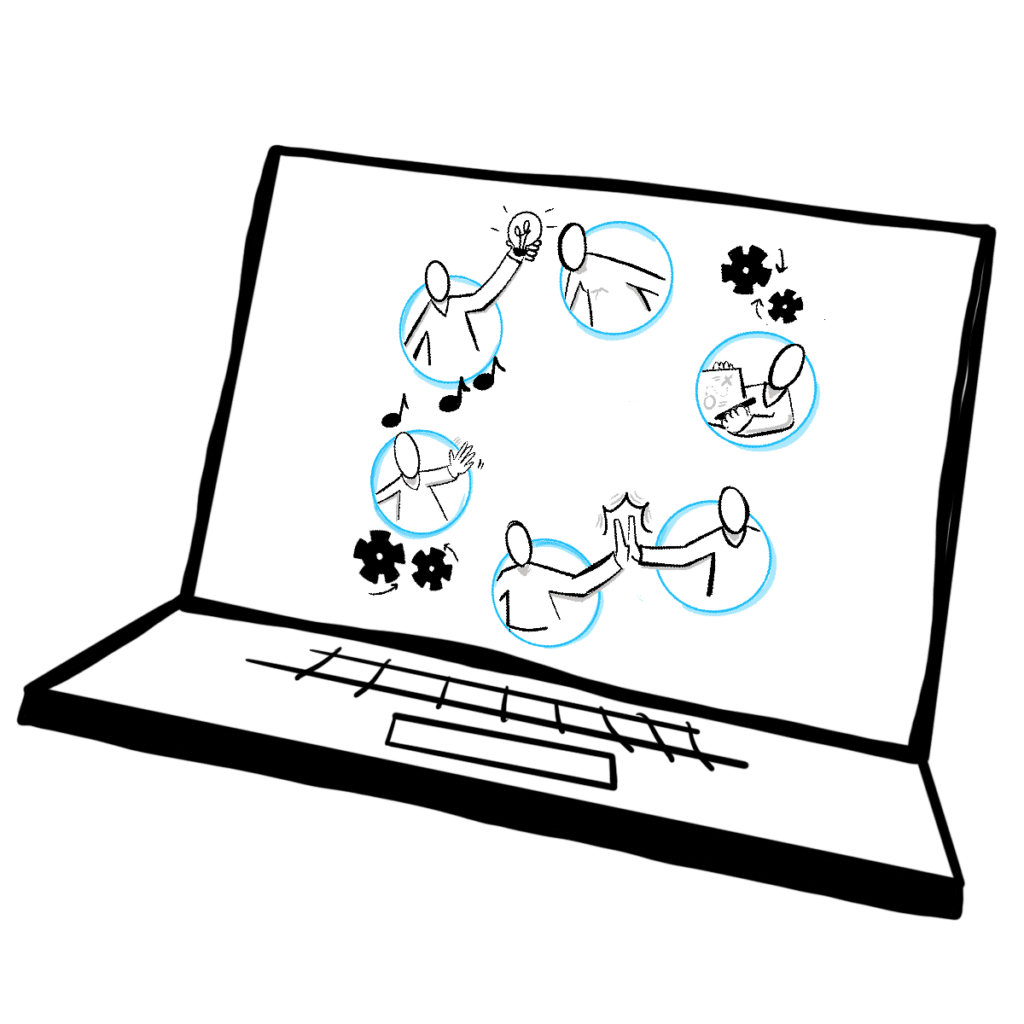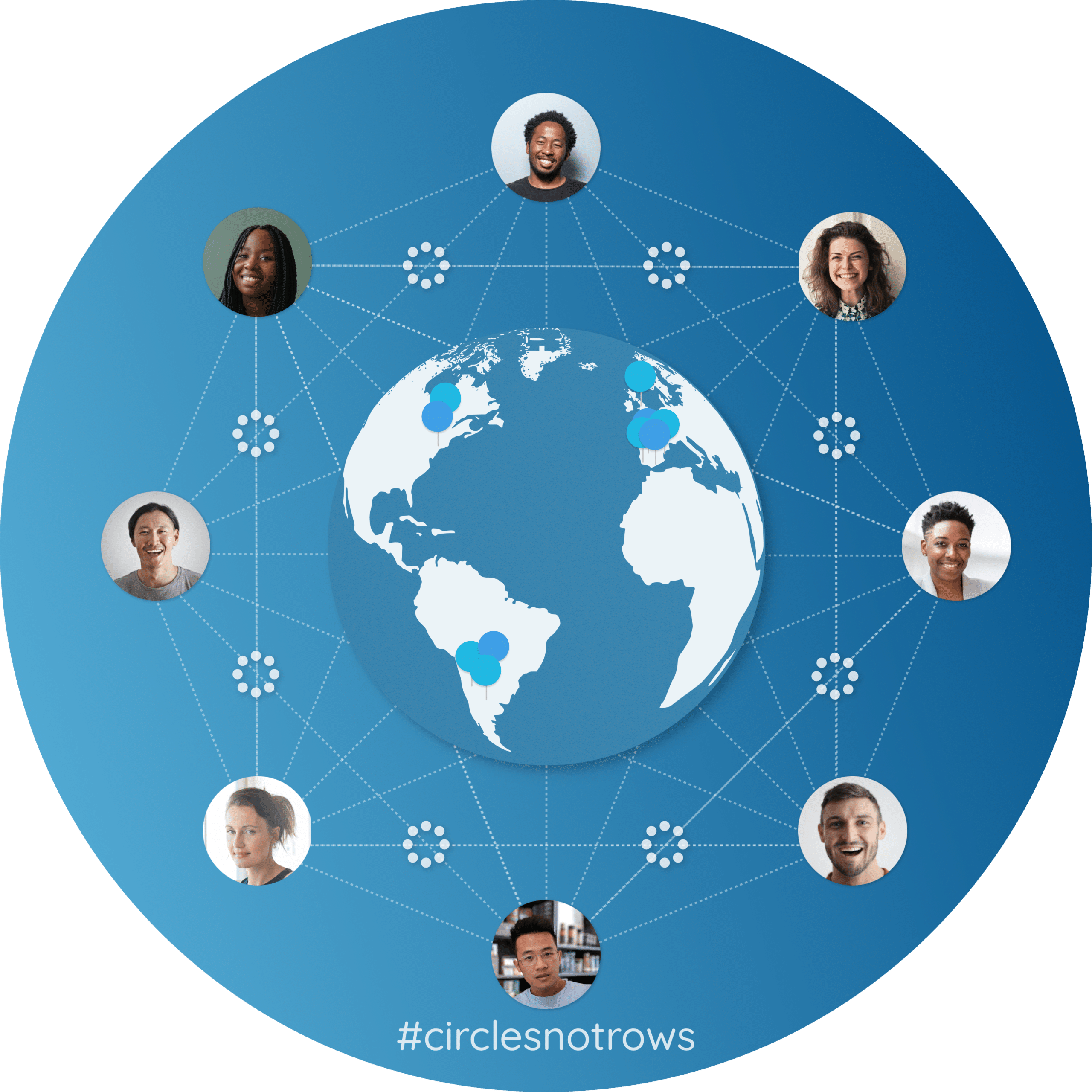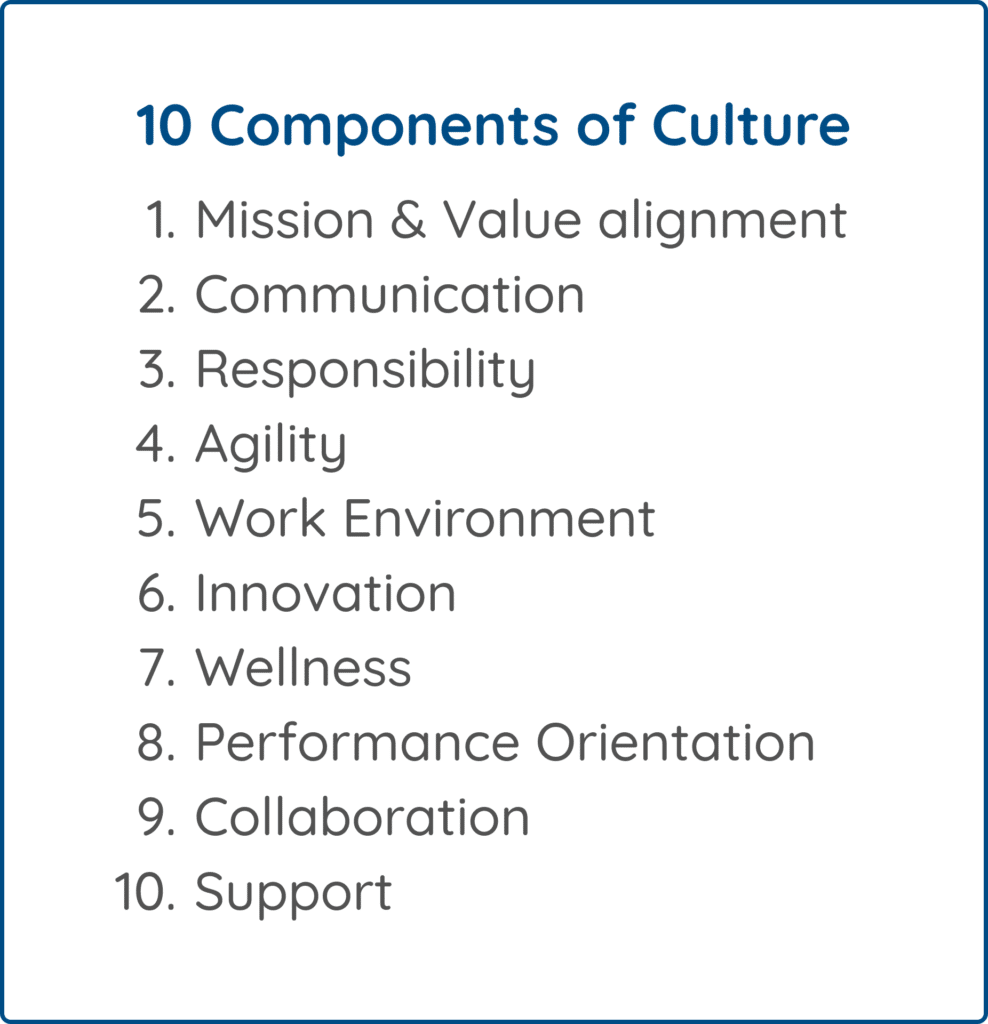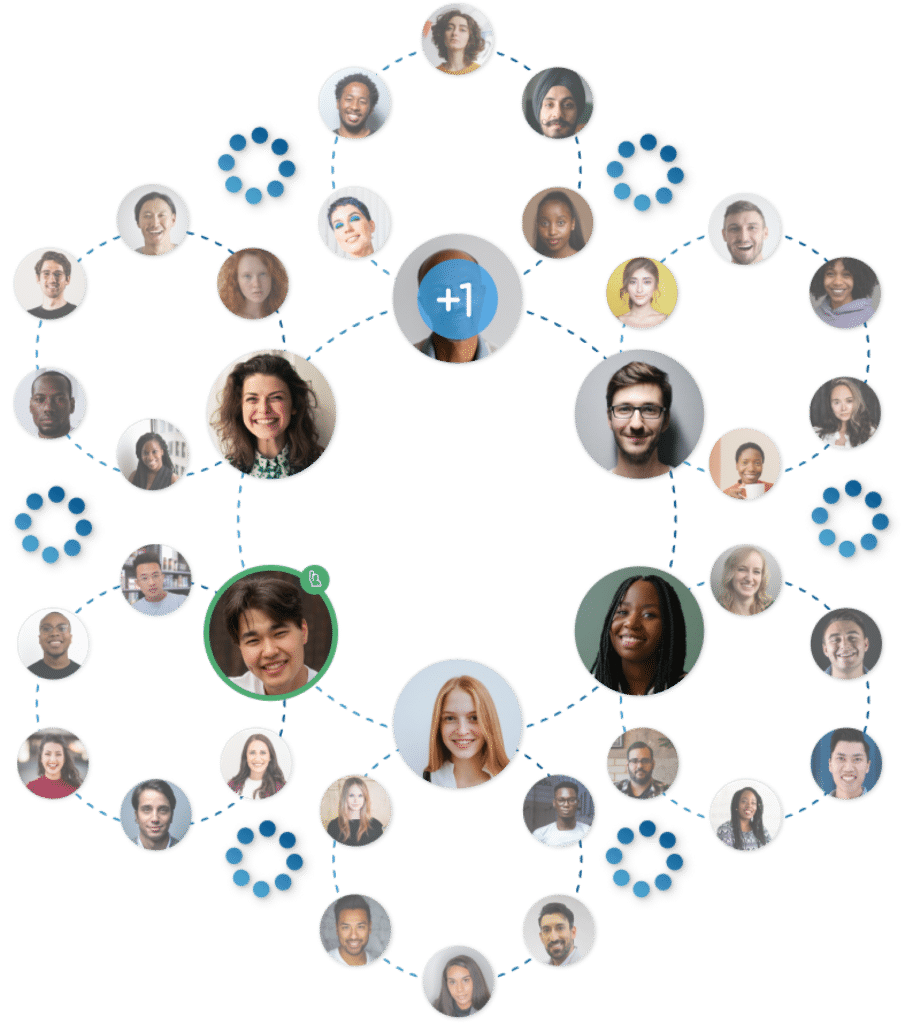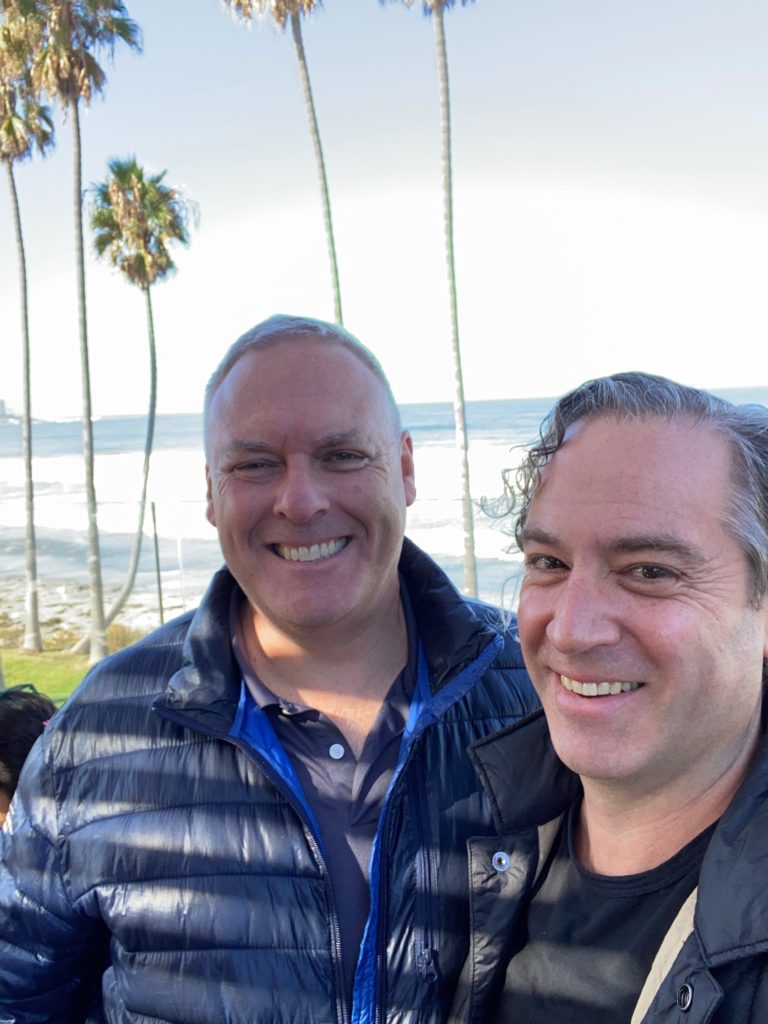Our Journey
At Circles, our customers confirm: we augment company culture by designing inclusive spaces for people to connect and grow. Customers frequently describe our platform and programs as inclusive. Yet when we forged a recent partnership with Glassdoor, they asked to see our company DE&I statement–and we realized we had merely conceptualized one. We sat down to write it and recognized our approach was through a white U.S. lens, one that did not represent our globally complex team. Cognitive dissonance ensued.
Were we fostering inclusive communities for our customers without adequately serving each other?
This launched a culture journey for our entire company. Together, we began investigating our internal landscape, making space to intentionally lay the foundation for an inclusive company culture.
Culture Builders
Inspired by conversations with Glassdoor and DuPont, who are pioneers in the work of inclusion and belonging, we designed Culture Builders, a four-session program. Arriving at cultural competence wasn’t the goal; we simply made a commitment to connect and grow together, with the program as a starting point.
Program objectives included building awareness and appreciation for DEI, discovering opportunities for personal growth, sharing learning and stories, and simply connecting as humans. Facilitated groups were sorted cross-culturally and functionally, and the four Culture Builders sessions covered:
- Inclusivity: What it means to each of us.
- Background: Discussing our cultures of origin.
- Privilege: Revealing power, privilege and marginalization.
- Reflection: Sharing how the sessions enriched our connections.
Team Experience
To engage the Culture Builders sessions, team members set aside 75 minutes every other week over an eight-week span. Facilitated sessions consisted of prompts promoting storytelling and active listening, with the Circles platform features guiding the way (spotlight with timer, hand raises, random order generator and more).
Across the board, participants enjoyed connecting with one another and sharing stories…

Inclusivity
One early discovery was that although we all value inclusion, the acronym “DEI” isn’t typically used outside of the U.S. We also learned that ideas like diversity and inclusion mean something different depending on not just our country of origin, but the intersectionality of our individual gender, class, sexuality, ethnicity, personality and more. True diversity means welcoming all the complex ways that the word is defined.
Background
Initial conversations also revealed that in today’s U.S. cultural moment, our violent history and longstanding systemic inequities have resurfaced DEI conversations specific to ethnicity. The Culture Builders curriculum addressed, however, that colonization is not unique to the United States. Racism is part of our shared, global human history.
“There are a lot of things taking place in the U.S. right now that seemed like a felt need for many in our circle to discuss.”
The U.S. focus on inclusion as it pertains to ethnicity rubs against the fact that our company can feel U.S. centric to Circles employees living outside the States–which describes the majority of our team. Our operations and development teams are dispersed throughout Argentina, Spain, Australia and New Zealand, where current inclusion efforts focus more on accessibility and socio-economic inequities.
“It was surprising to see how our current reality and culture of origin impacts the way we perceive DE&I”
Privilege
Depth of conversation increased with each session, culminating for some with the third session covering privilege, power & marginalization. As the topics increased in intensity, likewise participants engaged with increasing trust and vulnerability.
“We finally hit on some great, deep conversation–and we’ve only just scratched the surface”
Reflection
“We didn’t end up with any specific actions to take at Circles”
Sometimes in a business setting, it feels unwise to leave a gathering without agreed upon action steps. But when it comes to inclusive spaces to connect & grow, the conversation itself is often the bulk of the action needed–at least initially, as a starting point.
That’s not to say no Circles participants were compelled to take action–it just wasn’t prescribed by the Culture Builders program. The desire was for action steps to emerge organically. As one team member shared:
“To me personally, the Culture Builder journey did more than just start the conversation. I feel like I learned important things that are already impacting my actions–It’s not enough to notice. I need to take action on all the little things.”
Discovering We’re not Alone
As an organization, we know that we join with other global organizations who are pressing in to serve their communities well from a global DEI perspective. We are all learning from each other, innovating & expanding our inclusive mindset. In our new world of hybrid and globally remote work, it’s bound to be an increasingly present opportunity to grow in global DEI together.
Outcomes
Culture Builders created space for open dialogue and discovery, and ultimately accomplished the initial objective: serving as a culture-setting starting point that left us wanting more.
“It’s difficult to find a baseline for a global team. It’s slow enough to advance everyday tasks, let alone engage potentially difficult topics.”
Initially, some wondered if culture circles were necessary–after all, we’re a growing, early-stage company with work to accomplish. Furthermore, for many of us, Circles is the most inclusive culture we’ve encountered. But as we grow in size and diversity, we want to ensure that inclusion permeates everything we do, internally and externally. Our culture is not truly inclusive unless every voice is heard–and how will it remain so if we don’t keep short accounts and periodically reassess?
So, what does DEI look like for a globally distributed startup? Starting the conversation, making sure every voice is heard, and once we’ve listened to understand, maintaining spaces that invites diverse perspectives and emerging action, ongoing.
For an individual or organization an inclusive mindset is a pursuit, not a fixed outcome. We commit to the journey, together.
